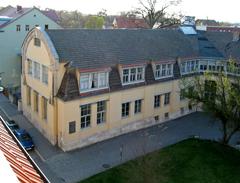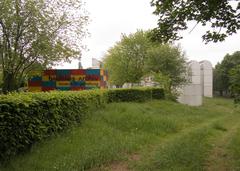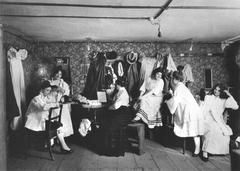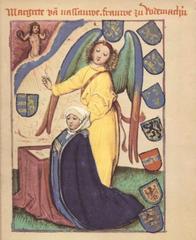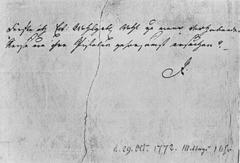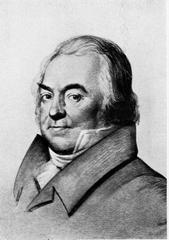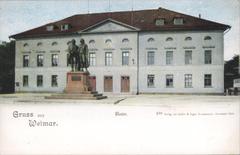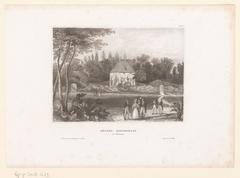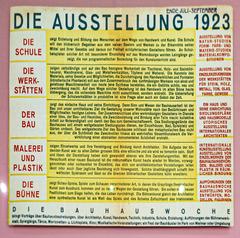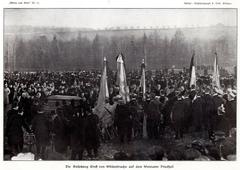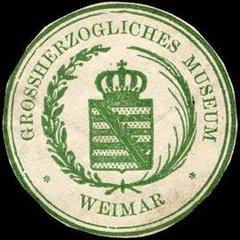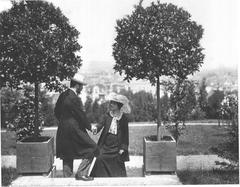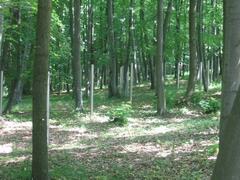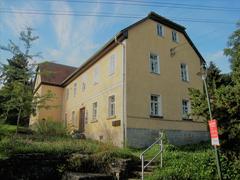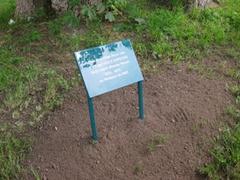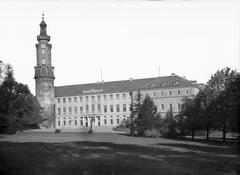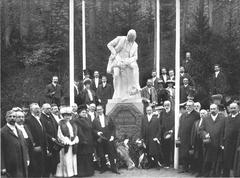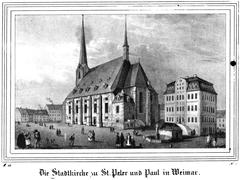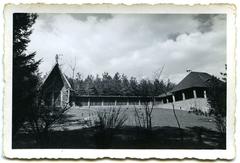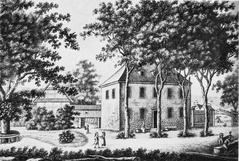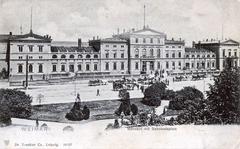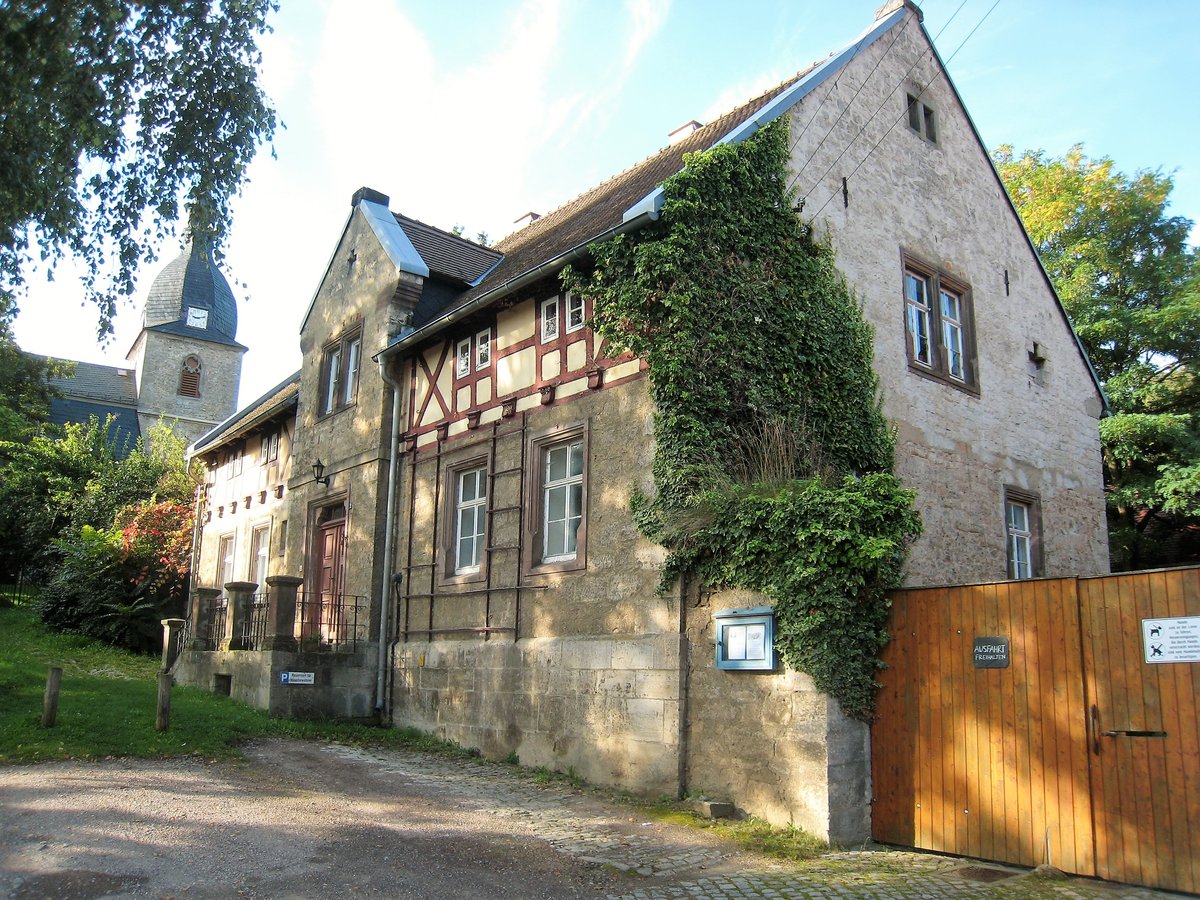
Parsonage Wittumspalais Weimar, Germany: Visiting Hours, Tickets, and Visitor Guide
Date: 14/06/2025
Introduction
At the heart of Weimar’s historic center stands the Parsonage, most notably associated with the Wittumspalais (Dower Palace), a landmark of German Enlightenment and Weimar Classicism. Constructed between 1767 and 1769, this residence gained cultural prominence under Duchess Anna Amalia of Saxe-Weimar and Eisenach, who fostered a vibrant intellectual and artistic salon that drew the likes of Goethe, Schiller, Wieland, and Herder. The palace’s preserved interiors—including the Green Salon and Round Table Room—are enduring symbols of this golden age (klassik-stiftung.de).
In Weimar, “Parsonage” also refers to the clergy house at the Herderkirche (St. Peter and Paul’s Church), where philosopher and literary figure Johann Gottfried Herder lived and worked. This site, intertwined with the city’s intellectual awakening, offers further insight into the evolution of Weimar Classicism (one-million-places.com).
This comprehensive guide details the history, visiting hours, ticketing, accessibility, guided tours, and nearby attractions for the Wittumspalais and Parsonage, ensuring an enriching visit to one of Germany’s UNESCO World Heritage destinations (weimar.de).
Contents
- History of the Wittumspalais
- Architectural and Artistic Highlights
- Visiting Information
- Nearby Attractions
- The Parsonage in Weimar’s Literary Landscape
- Visitor Information: Hours, Tickets, and Accessibility
- Top Museums Near the Parsonage
- Practical Visitor Tips
- FAQ
- Conclusion
- Sources
1. History of the Wittumspalais
Origins and Construction
The Wittumspalais was commissioned by Jakob Friedrich von Fritsch and designed by Johann Gottfried Schlegel between 1767 and 1769 on the site of a former Franciscan monastery. Its strategic location opposite the Deutsches Nationaltheater and near the Goethe-Schiller Monument underscores its historic importance (weimar-kennenlernen.de).
The Anna Amalia Era
After a fire destroyed the Weimar Residenzschloss in 1774, Duchess Anna Amalia acquired the Wittumspalais as her new residence. She transformed it into the city’s intellectual epicenter, commissioning Adam Friedrich Oeser to refurbish its interiors, most notably the Green Salon, which remains a highlight of late 18th-century decor (klassik-stiftung.de).
Cultural Significance
The Wittumspalais flourished as the salon of Weimar Classicism, hosting the “Freitagsgesellschaft” (Friday Society) in the Round Table Room. Literary giants such as Goethe, Schiller, Wieland, and Herder were regular guests, cementing its legacy as a crucible of German culture (weimar.de).
Later History and Preservation
The palace continued to play a civic and cultural role, hosting the first Thuringian Landtag and the Lesemuseum. Surviving wartime damage, it reopened as a museum in 1949 and underwent major restoration from 2016–2018. Today, it is part of the “Classical Weimar” UNESCO World Heritage ensemble (whichmuseum.com).
2. Architectural and Artistic Highlights
- Green Salon: Preserved private parlour of Duchess Anna Amalia with original Classicist furnishings.
- Round Table Room: Venue for the Friday Society, adorned with a ceiling mural and period decor.
- Poet’s Room (Roter Salon): Portraits of Goethe, Schiller, Wieland, and Herder.
- Multimedia Exhibition: Interactive displays on the palace’s history (ground floor).
Visual: Green Salon, Wittumspalais
3. Visiting Information
Opening Hours
- Tuesday–Sunday: 10:00 AM – 5:00 PM
- Closed: Mondays, January 1, December 24–26
Tickets
- Adults: €7
- Reduced: €5 (students, seniors)
- Children under 18: Free
- Family ticket: €15
Tickets available onsite or online via the Klassik Stiftung Weimar website.
Accessibility
Wheelchair accessible (ramps, adapted restrooms). Guided tours for visitors with special needs available upon request.
Guided Tours and Audio Guides
- Guided tours: Weekends at 11:00 AM and 2:00 PM (advance booking recommended)
- Audio guides: Available in multiple languages at the entrance
Travel Tips
- Use public transport (bus lines to Theaterplatz) or park at Goetheplatz garage.
- Photography allowed without flash.
4. Nearby Attractions
- Deutsches Nationaltheater Weimar: Theatre and performance venue directly opposite the palace.
- Goethe-Schiller Monument: Iconic statue nearby.
- Weimar Residenzschloss: Former royal palace, now a museum and library.
- Anna Amalia Library: Renowned for its Rococo Hall (advance booking required).
5. The Parsonage in Weimar’s Literary Landscape
Johann Gottfried Herder and the Parsonage
Herder, central to Weimar’s intellectual life, lived and worked at the parsonage near the Herderkirche from 1776 to 1803. The building was a hub for philosophical and literary debate, influencing both Sturm und Drang and Romanticism (one-million-places.com).
The Parsonage and Weimar Classicism
As Herder’s home, the parsonage played a key role in the development of Weimar Classicism, alongside Goethe’s and Schiller’s houses and the Anna Amalia Library (UNESCO).
Visiting the Parsonage
The parsonage is adjacent to Herderkirche (St. Peter and Paul’s Church). While not usually open as a museum, visitors can explore the exterior and the historic district. Herderkirche is generally open daily, 9:00 AM–6:00 PM (hours may vary; check the Weimar Tourist Office).
6. Top Museums Near the Parsonage
- Bauhaus Museum Weimar: Tuesday–Sunday, 10:00 AM–6:00 PM. Adults €8, reduced €6 (klassik-stiftung.de).
- Goethe’s House: Daily, 10:00 AM–5:00 PM. Adults €7, reduced €5.
- Anna Amalia Library: Daily, 10:00 AM–6:00 PM. Adults €9, advance booking required.
- Neues Museum Weimar: Modernist art and design.
Tip: The Weimar Card offers discounted entry to multiple sites.
7. Practical Visitor Tips
- Arrive early for guided tours and a quieter experience.
- Photography: Allowed in most museums; check specific policies.
- Plan ahead for popular sites (especially the Anna Amalia Library).
- Wear comfortable shoes: The old town is best explored on foot.
- Language: Basic German is helpful; guided tours in English available on request.
- Tourist Information Center: Marktplatz, open daily for maps, tickets, and advice.
8. FAQ
Q: What are the Wittumspalais visiting hours?
A: Tuesday–Sunday, 10:00 AM–5:00 PM; closed Mondays and major holidays.
Q: How much do tickets cost?
A: Adults €7, reduced €5, children under 18 free.
Q: Is the Wittumspalais wheelchair accessible?
A: Yes, with ramps and adapted restrooms.
Q: Can I visit the Parsonage interior?
A: The parsonage is not generally open as a museum, but the Herderkirche and exterior are accessible.
Q: Are guided tours available?
A: Yes, for both the Wittumspalais and city walking tours (some in English).
9. Conclusion
The Parsonage and Wittumspalais are cornerstones of Weimar’s classical heritage, offering visitors an immersive journey through German Enlightenment, literature, and architecture. With its preserved salons, engaging exhibitions, and central location, the Wittumspalais is a must for history and culture enthusiasts. The parsonage, while less accessible inside, still stands as a testament to Weimar’s world-changing intellectual legacy. Plan your visit to explore these sites, along with neighboring museums and landmarks, for a full experience of Weimar’s UNESCO World Heritage charm.
For the latest opening times, events, and tickets, consult the official Wittumspalais website and the Weimar Tourist Office.
10. Sources and Further Information
- Wittumspalais Weimar: Visiting Hours, Tickets & Historical Highlights – Klassik Stiftung Weimar
- Visiting Weimar’s Parsonage: Hours, Tickets, and Literary History – One Million Places
- Weimar Tourism Official Website
- UNESCO World Heritage List – Classical Weimar
- Weimar Tourist Map
- Bauhaus Museum Weimar – Klassik Stiftung Weimar
- Anna Amalia Library
- Whichmuseum: Wittumspalais Weimar
- Weimar Museum Pass Info
- Annees de Pèlerinage
- Borders of Adventure
- Tall Girl Big World
- German Culture

